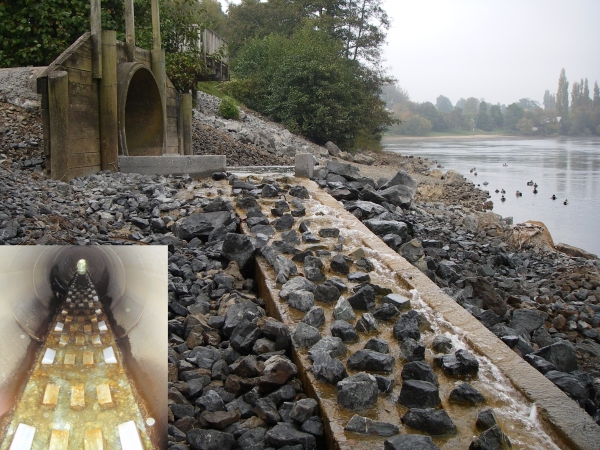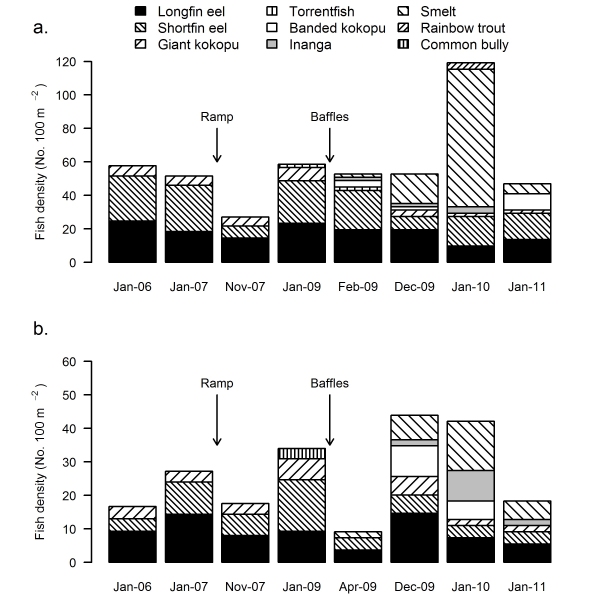It was identified that several valued native fish species, including inanga and smelt (Retropinna retropinna), were excluded from Bankwood Stream in Hamilton because of a culvert that was perched where it joined the Waikato River.
The first step to restoring upstream passage for these species was to use the knowledge gained from our research to design and install a fish ramp at the outlet of the culvert to overcome the significant drop to the Waikato River (Figure 1). Monitoring showed that while fish were getting to the top of the ramp, they still weren’t making it through the culvert because of how fast the water was flowing (Franklin & Bartels 2012). The second step to restoring fish passage was, therefore, to install spoiler baffles inside the culvert, which our research had shown would help slow down the water and let fish through.
Subsequent monitoring has shown that all the target fish species are now successfully making it past the culvert and into Bankwood Stream (Figure 2). (Franklin & Bartels 2012)
Back to research project (understanding fish passage in New Zealand) and references


